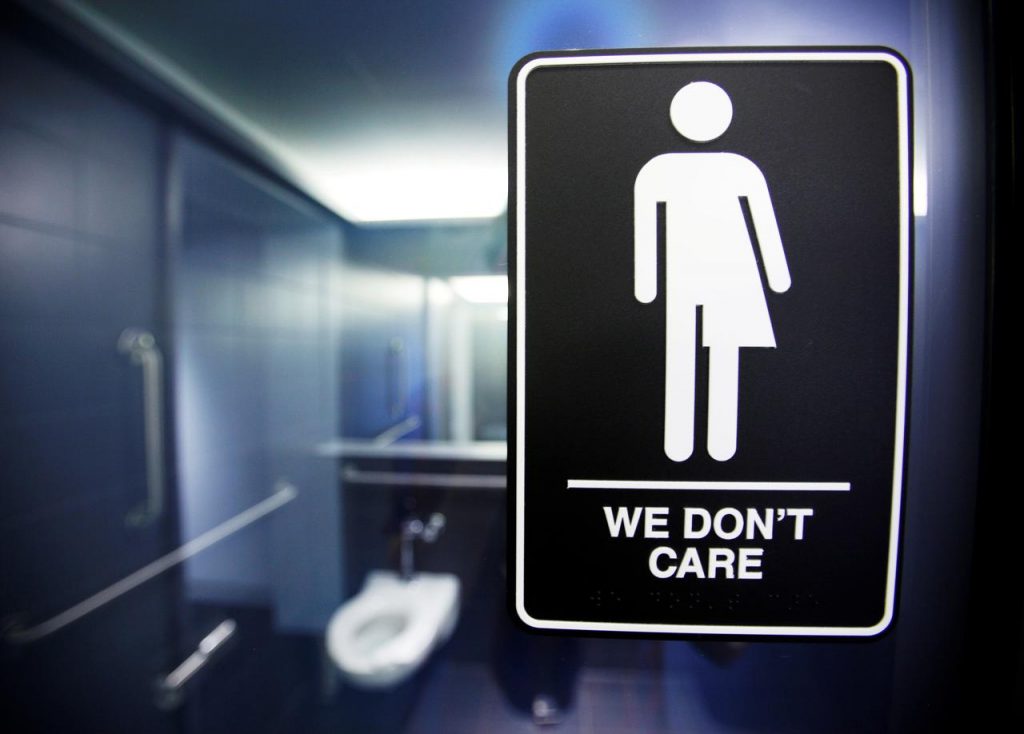The Mumbai local is the heart and soul of the commuting experience in the city. As an avid commuter of the local, some sweat, tears and a lot of pushing gets me to my destination on time without creating a hole in my pocket.
It has only been a couple of months since the pictogram representing the ladies compartment on the Mumbai local changed from a woman in a sari and ghoonghat to a working professional in a blazer.
While this might resemble some slight version of progress, it is still miles from being inclusive.
Pictograms are far more effective than words and text as they represent concepts through visual means, in a condensed and compact fashion. The viewer of the pictogram or signage, comprehends and decodes the symbols from their prior experiences, with the help of schemas or categories they create to sift through a barrage of information in the world around them.
Pictograms and signages in general, especially relating to gender, are not mere visuals but serve to visibilise or invisibilise populations and contribute to a society’s understanding of gender.
The move from the sari and ghoonghat to western formals does affirm the shift in women’s place in the domestic sphere to the world of work, symbolising the era of the new Indian woman. This is, however, not without its problems.
Firstly, the pictogram represents a minority of the working female population who are expected to dress up ‘formally’ to work. Not only might it appear to be a white-washed picture of the working woman, it is far from reality.
More and more workplaces are recognising the idea that equating ‘professionalism’ with a strict dress code induces uniformity and restricts employee comfort levels at the workspace. Moreover, this ‘formal attire’ that is part of the dress code is extremely expensive and, hence, accessible to only a few. Therefore, this change is also deeply classist and reinforces social hierarchies, as access to these workspaces itself is an assertion of social and economic privilege.
The pictorial representation on the ladies compartments further invisibilises a large section of women belonging to the informal sector and those part of workspaces that have strict Indian attire restrictions – thus diminishing any form of visibility of diverse work cultures.
Do women in these work cultures, then, not represent the modern Indian woman and in extension, their independence?
Interestingly so, a woman in sari-ghoonghat lies in sharp contrast to the working woman donning a shirt and blazer. The ideas of oppression and submissiveness (that is represented by the former) and independence and confidence (that is represented by the latter), are not in reality two sides of the same coin. As traits or attributes, each of them are nuanced and exist (or do not) at multiple levels.
Not only does this pictogram invisibilise and diminish the diversity of working cultures, it doesn’t do much to add to the long journey we’ve come in understanding and visibilising a multiplicity of gender identities and expressions, either.
The gender binary signage, serves to reinforce the gender ideal, thereby marginalising trans and gender-nonconforming persons and creating hostile public spaces that police gender and gender expression.
Meyer’s Minority Stress Model draws attention to the stress experienced by persons from minority communities on account of anticipating rejection from mainstream society and internalising beliefs of social stigma. In a study, Brian Rood and his colleagues from Augsburg College, Minneapolis found that for transgender non-conforming persons (TGNC) this expectation of rejection is heightened in public spaces that have a clear gender binary system.
Imagine feeling hyper vigilant, fearing for your safety and expecting a confrontation in a public washroom? Imagine feeling like that in multiple public spaces, all the time.
Navigating such public spaces can be stressful, mentally exhausting and anxiety provoking, pushing many to avoid them altogether because they fear exclusion. The world of design has implemented measures to ensure spaces foster inclusion and create awareness. Alternatives to gender-segregated washrooms include single stall (multi-use) washrooms, pictograms that focus on the amenity/function rather than the user, pictorial representations combining both “typically male” and “typically female” features or ditching pictures for texts (toilet vs. urinal.)

A sign protesting a 2016 North Carolina law restricting transgender bathroom access at bathroom stalls at the 21C Museum Hotel in Durham, North Carolina. Photo: Reuters/Jonathan Drake
The Indian Railways, has followed a ‘women’s only’ approach to address the mobility gap, thus serving to make transport affordable, accessible and safe for women in the country. The ‘general’ compartment doesn’t do much to create a safe, non-transphobic space for trans and non conforming persons either. Moreover, in recent years there has only been a rise in reported cases of abuse and harassment of transpersons on various Indian transport systems.
There seems to prevail a lack of awareness and general air of transphobia which makes it crucial for transport systems in the country to broaden their gendered lens to mobility.
It has been little more than a year since India’s premiere social sciences institute – TISS, Mumbai – passed a motion on gender neutral washrooms and instituted a gender neutral hostel on campus. Similarly, workspaces and spaces of leisure, through structural changes in design and a restructuring of language have taken measures to address gender beyond the binary. These measures are monumental as feminism and policy initiatives for gender equality advocate for an intersectional approach that is inclusive of voices of people on the margins.
A change in design and the language accompanying it are important steps in materialising a critical gender discourse and in attempting to reflect privilege and its role in how we perceive spaces to be safe and accessible.
Lorelle Mariel Murzello is a teacher, educator and researcher. Her interests include mental health, gender and culture.
Featured image credit: Western Railways/Twitter

